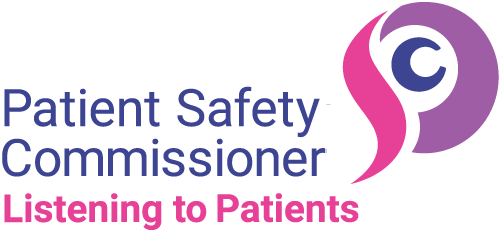
Ryan’s Rule was developed in response to the tragic death of Ryan Saunders in 2007. Sadly, Ryan died from an undiagnosed streptococcal infection that led to toxic shock syndrome. Worried that Ryan’s condition was worsening, his parents felt their concerns were not acted on in time. In light of his death, the Queensland Department of Health made a commitment to introduce a patient, family, and carer escalation process (Ryan’s Rule) to minimise the possibility of a similar event occurring.
Ryan’s Rule applies to all patients admitted to any Queensland Health public hospital, including the emergency department and in some Hospital in the Home services. It is the basis of Martha’s Rule and contains three steps:
- Talk to a nurse or doctor about your concerns if you feel you your health condition is getting worse or not improving and you are worried. If you are not satisfied, go to the next step.
- Talk to the nurse in charge of the shift. If you are not satisfied, go to the next step.
- Phone 13 HEALTH (13 43 25 84) or ask a nurse to call the number for you and request a Ryan’s Rule clinical review.
Once Ryan’s Rule is enacted, a nurse or doctor will complete a clinical review of the patient and the treatment they are receiving.
The Patient Safety and Quality, Clinical Excellence Queensland team that introduced Ryan’s Rule in Queensland Health – Shaune Gifford and Kate Smith – outline how they achieved this.
“We began implementing Ryan’s Rule in December 2013 and incrementally rolled it out across the state until May 2015. We asked individual hospitals to have at least 80 per cent of their staff trained before a facility could sign up to access the single, statewide, 24/7 Ryan’s Rule phone number.
We were working in the unknown and did not know what to expect. Ryan’s Rule encourages interactions with local staff initially to resolve concerns about care, enacting Steps 1 and 2. In 2023, Step 3 activation remained relatively low, with approximately seven calls daily across 177 facilities, including 55 primary healthcare facilities.
Approximately 60 per cent of calls stem from an issue around communication, typically where patients or family members feel their health condition is worsening or not improving as expected.
When Ryan’s Rule was first implemented, clinical staff were apprehensive, thinking it was possible that patients might ring the 13 HEALTH number for Step 3 with trivial matters. However, making a Ryan’s Rule call requires significant assertiveness from patients or relatives, and the call volume has remained modest.
An important lesson from the initial rollout was how to manage calls, and more precisely who takes the call. Initially, calls went to the medical directors. We soon realised that the most effective approach was to have the clinician coordinating or conducting the clinical review to be onsite at the time of the call, rather than relying on an on-call clinician. The role of the after-hours hospital coordinator is often suited to triaging these calls.
Communication resources were key to the initiative’s success. To promote Ryan’s Rule to the public, the team organised a series of communication materials, ensuring patients received brochures explaining its use at admission. They also designed posters for hospital wards and supplemented website information, including an explainer video.
For Queensland Health staff, Ryan’s Rule was embedded into training along with an educational video, and this was made compulsory.
Communications materials were created in ten languages and disseminated throughout the state with all facilities using the same assets. Promotion was organic through public-generated social posts on X and Facebook, supported by families who had used the service reporting their experiences to the media. This was monitored, and inaccuracies were corrected in real time.
We still face challenges. Social media posts reveal that some patients are unaware of Ryan’s Rule or have difficulty implementing it. We continue to focus more on staff and consumer education to address this.
In 2023, there were 2,355 Ryan’s Rule activations in Queensland Health – an average of nearly seven calls per day.
Here are the specific findings from the data:
- Most calls occurred between 10am and 5pm.
- Nearly 50 per cent of clinical reviews resulted in no change to planned care.
- For calls where feedback was obtained, 61 per cent of callers agreed or strongly agreed that their concerns were addressed.
Further information on Queensland Health’s Ryan’s Rule can be found at Ryan’s Rule | Health and wellbeing | Queensland Government (www.qld.gov.au)

